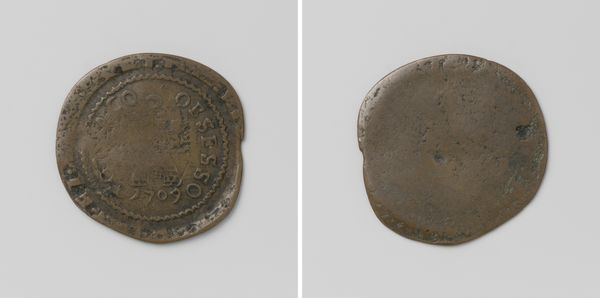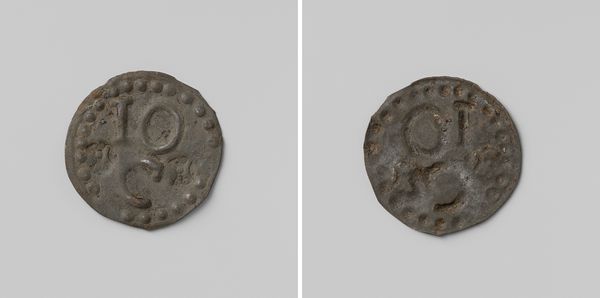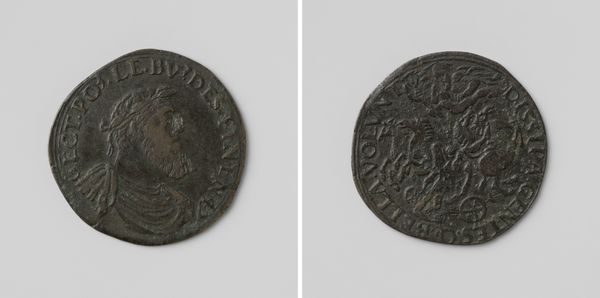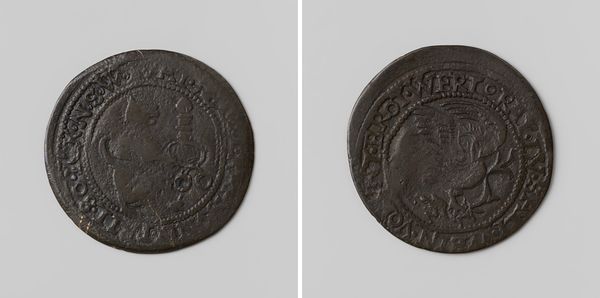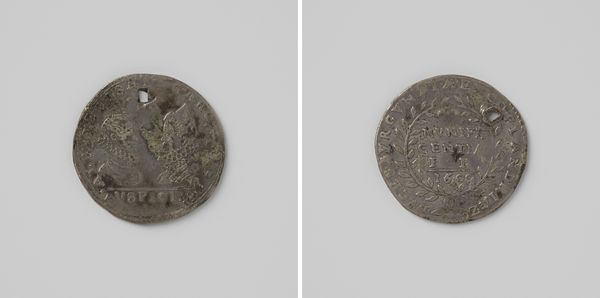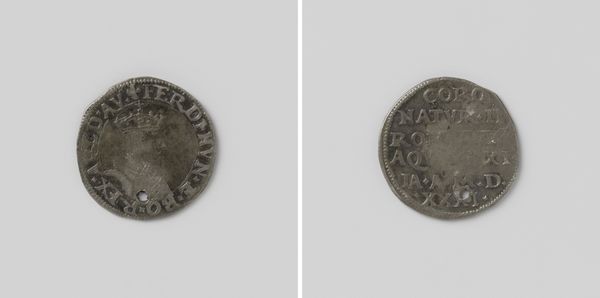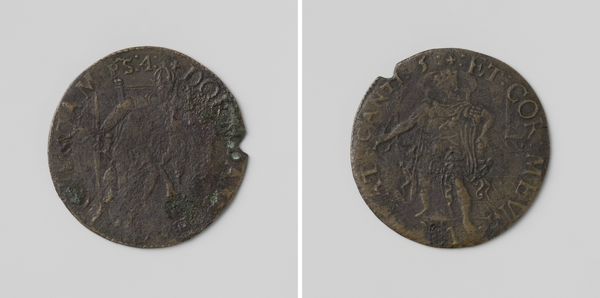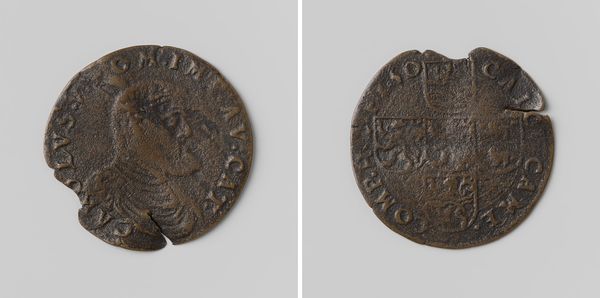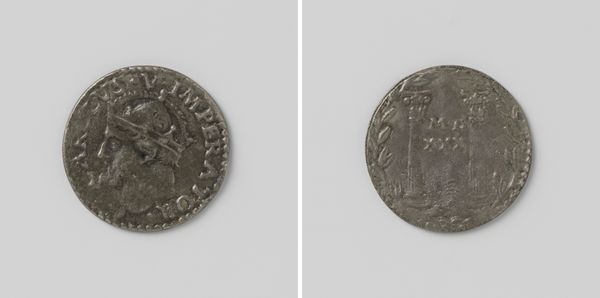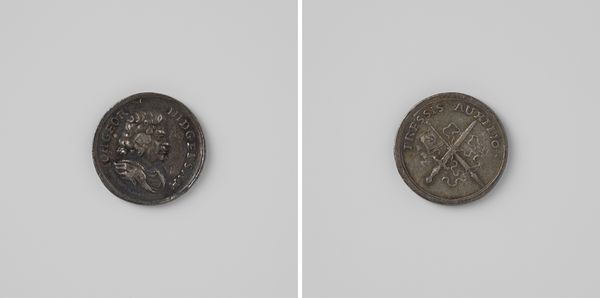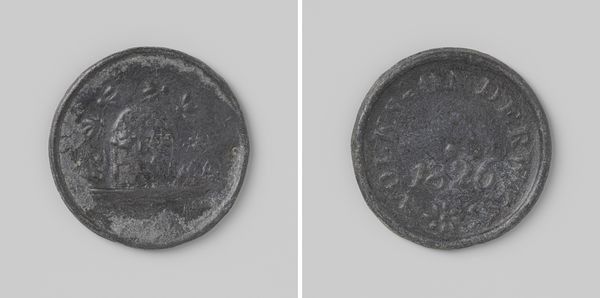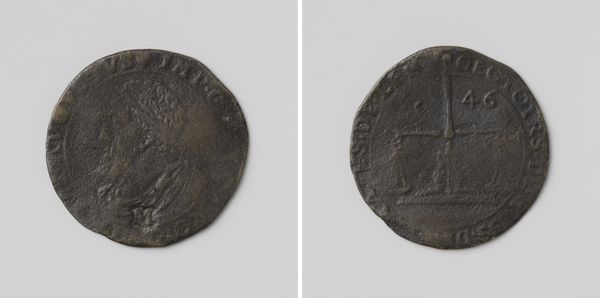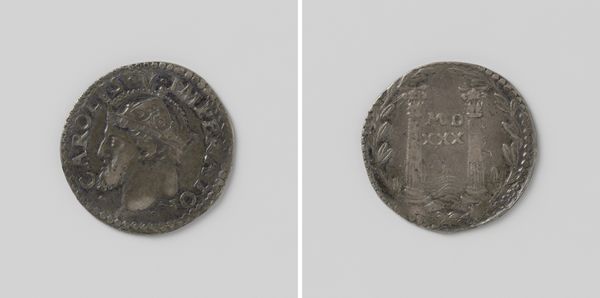
Strafgevangenis Ommerschans, huismunt geslagen op last van de Maatschappij van Weldadigheid ter waarde van 25 cent c. 1822 - 1830
0:00
0:00
print, metal
#
medieval
# print
#
metal
#
sculpture
Dimensions: diameter 4.5 cm, weight 3.92 gr
Copyright: Rijks Museum: Open Domain
Curator: Let's examine this intriguing piece from the Rijksmuseum, a house coin, struck between 1822 and 1830, from the Ommerschans penal colony. Editor: There’s something undeniably austere about its presence. The crudeness of the metal, the blurred impressions – it speaks to a utilitarian bleakness, wouldn't you say? Curator: Absolutely. These coins were commissioned by the Society of Benevolence, serving as currency within the Ommerschans penal colony. Its value, "25 cent," is imprinted on the face of each coin, offering inmates a means of commerce within a closed, controlled economy. Editor: The choice of materials seems almost pointedly unattractive, as if denying even the most basic visual pleasure. I'm curious, how does the texture of the metal contribute to its impact as a tool for societal control? Curator: Indeed, even the medium plays a part. Metal is practical, of course, durable and difficult to destroy. The Society's agenda aimed at molding the inmates' very lives. These were men and women dispossessed from the economic mainstream of society and pushed to its margins—literally buying and selling within their new context, but never fully freed. Editor: So, it’s more than just a coin; it's a symbol of forced economic activity within a system of control, with that perimeter of bumps almost a parody of standard minting—function mimicking and mocking standard tender. I see. Curator: It's precisely that symbolic weight combined with historical context that lends the piece its profound significance, representing forced reformation. The coins stand as a testament to power structures and social policies of that era. Editor: Its humble form, easily overlooked, becomes surprisingly loaded with meaning as one unpacks its history and material language. The details definitely underscore that what seems small can often say a lot about the broader structure. Curator: Right, a quiet testimony against systemic injustices, echoing beyond its size. Editor: Exactly, sometimes the subtlest structures can betray an era.
Comments
No comments
Be the first to comment and join the conversation on the ultimate creative platform.
